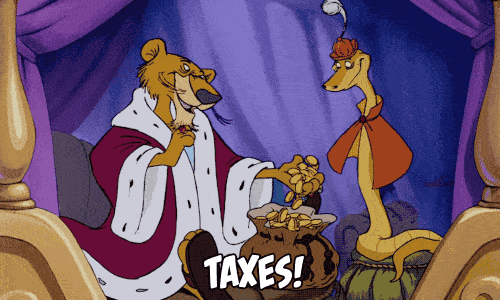The Fiat Illusion
- Adaptive Alph

- Jan 25, 2020
- 11 min read
Updated: Jan 26, 2020
Paradigm Economics
50 years ago, the President of the U.S., Richard Nixon, announced that his people could no longer convert the greenback (USD) for a fixed amount of gold. Since Nixon’s announcement, the belief in paper money, also known as the fiat currency system, has established itself as the dominant monetary force in western economies. This great experiment has increased wealth inequality to record amounts and the middle class of developed nations feels left behind. As a result, populist and nationalist ideas are taking root and spreading across the globe at a faster pace than the Black Death in 14th century Europe. Among these populist ideas is Modern Monetary Theory (MMT), which is a short term monetary solution to long term problems in the financial markets. Most investors today underestimate the likelihood of MMT being implemented and given the consistently low interest rate environment of developed nations across the world; the next great monetary experiment may already have begun.

From Hans Rosling's book, Factfullness. Approximately 1 billion people live in extreme poverty, on $1-2 a day. Level 2 begins at $4 a day, and includes 3 billion people. Around 2 billion live between $8-$32 at level three, and it is here that people begin to get water on tap and stable enough electricity to run a fridge. Finally, there is 1 billion people at stage 4.
How did we get here?
For the past 11 years, governments in developed nations have failed to fund sovereign liabilities and their central banks have therefore continuously printed money to fund debts. Despite attempts by governments to cool the economy, the world has seen rising populism, division between people with heterogeneous political views as well as a general sense of unrest, which is evidence of an economy that is perceived as not working for most people. This perception of a dysfunctional economy also demonstrates our human behavioral flaws because according to Hans Rosling’s magnificent book, Factfullness, the absolute level of living standards across most nations surpass all other periods in history. The average income for all social classes has increased, a larger percentage of the world’s population have flushing toilets and the average joe in the western world can afford jumping on a jumbo jet for a vacation. The problem is that people care more about relative wealth than absolute wealth and it is the relative wealth between the middle class and the rich as well as the poor that is declining. The people in poor countries seem to be catching up to people living in more “developed nations” and the top 0.01% is making more money than ever and it does not help when the rich show of their wealth on Instagram. This real relative change in wealth inequality is something that a populist politician, with dangerous ideas, can seize and take advantage of and Adaptive Alph believes MMT is one of these dangerous ideas because with the ability to print money comes a great deal of power.

John Maynard Keynes, a famous British contradictionista
Keynes vs. MMT
The central idea of MMT is to give governments with a fiat currency system the power to create money to fund important government projects in education, health care and infrastructure, as long as these projects do not create extreme inflation. Money is created through debt monetization, which means that a central bank buys debt, such as bonds, from the government. MMT is actually not that much different from the Keynesian system because both theories assume that, 1), loaned money pays for itself through growth and, 2), the government won’t go broke because it is borrowing from its own central bank in its own currency. The difference between the two theories comes down to the supply and demand analysis of money. Under the current Keynesian system, the theory that currently takes precedence in the western world, governments levy taxes to pay for their liabilities. If the government is unable to pay its liabilities through these taxes, the politicians will then borrow money by issuing bonds. Issuing bonds increase the demand for loans, which in turn increase interest rates. When interest rates increase, private businesses and consumers are crowded out because if interest rates are high then businesses and consumers are unable to borrow money. However, MMTers argue that interest rates do not have to increase when the economy receives an excessive amount of stimulus as the government can raise taxes to reduce excess money rather than raising interest rates.

Self explanatory
Taxes: A Future Problem
Taxes therefore have two important functions in MMT. The first function is to make sure that people use their domestic currency such as USD instead of Bitcoin. If the government taxes in USD then the demand keeps the value of the USD at a high level. The second function of taxes is to control inflation. However, history has shown that controlling inflation is an almighty task. In Germany during the 1920s, prior to World War Two, there are images depicting Germans rolling wheelbarrows of cash to purchase bread, in the 1980s U.S. rapid inflation lead to contractionary monetary policy further guiding the U.S. into a recession and more recently Zimbabwe issued trillion dollar notes. The U.S. central bank handling of inflation in the 1980s is a perfect example of the Keynesian system as the crisis resulted in soaring interest rates. Ask the older generation and don’t be surprised if they invested in bonds that yielded 10% plus in interest rates. If the MMT system was implemented instead then the government would have increased taxes rather than interest rates. Ultimately, MMT is a tax on the future and anything that takes place in the future is easier for a politician to sell to the public if there are short term benefits and long term costs are hidden.

Stephanie Kelton, previously a Bernie Sanders Advisor
The Golden Egg Machine
As previously stated, MMT yields full access to a government’s printing press and is therefore a populist politician’s wet dream. MMT, pitched correctly, will sound like a solution for all problems and it is difficult to argue against a system that, to a layman in a democracy, only creates winners. So how does MMT work in theory? Stephanie Kelton can answer this question. She is a Stoneybrook contradictionista (economist) spearheading the MMT movement and she uses U.S. as an example for why MMT will work. Her argument boils down to two key points. The first point is that the USD is a public monopoly so if the people need cash, the government can always provide it. As a consequence of providing its citizens with free money, the government pursues accommodative fiscal policy through debt monetization to fund passion projects. For example, in the U.S., a hot topic is how the government should provide optimal health care for its citizens. Many of the Democratic Presidential candidates look to the Nordic countries for inspiration and, as a result, a suggested solution is universal health care, which is an expensive program. The U.S. government has a set budget so if a Democratic candidate wants a universal health care program it must reallocate resources from other projects, which is difficult, as reallocations need congressional approval. However, if MMT were a leading economic theory, the future President could instead turn to the treasury and its printing presses to create universal health care eliminating the reallocation decision. Now, when Adaptive Alph says turn to the printing presses, he means this as the worst-case scenario. Before turning to the golden egg machine, the government would first try to finance their projects by issuing bonds to investors other than the central bank. A bond is a form of a contract between a borrower (the government) and the lender (Investors) to exchange a sum of money today for a sum of money in the future. It is common knowledge that an investor’s solemn demand to buy something is if there is a quid pro quo. In this case, investors receive interest for lending money to the government and the more the government borrows the higher, due to a higher demand from the government, should the interest rates or compensation be to the investors - correct? However, the interest rate is just a way of comparing the value of money today versus tomorrow and a low interest rate means money is cheap today versus tomorrow. Under a system such as MMT money would be cheap because interest rates will be low. A low interest environment therefore creates GURANTEED inflation and it is honestly one of the few points that most economists agree upon.

Is this what is guiding Kelton?
Japan - Kelton’s Loadstar
This brings us to a low inflation country, Japan, which is Kelton’s second point demonstrating why MMT is practical. If you login to YouTube to watch interviews with professor Kelton, she constantly brings up Japan as a loadstar for MMT as Japan has domestic control over its currency. As a result of this power, Japan has stimulated the crap out of their economy to create economic growth ever since the Japanese version of the Great Depression in the 1980s. Despite this wild stimulation, Kelton points to the lack of inflation experienced in Japan for the past 40 years. Kelton specifically points towards the 240% debt to GDP level of Japan as evidence that high debt ratios are sustainable as long as they do not create inflation. Debt to GDP measures a country’s ability to pay back on its debt and generally a higher ratio equals a lower ability to do so. It all comes back to interest rates. A higher interest rate decreases the ability to pay back debts, which is the main reason why central banks across the world have kept interest rates historically low in recent years. Japan’s debt to GDP level can be compared to the U.S, which at 107% is the highest since World War Two. Kelton states that if Japan can sustain its operations for the past 40 years given its high debt level then so should the U.S. However, Adaptive Alph believes that having Japan as a loadstar for the MMT theory is terrible. Japan suffered from a lost decade in the 1990s and in the early 2000 they started using debt monetization/printing money as described above. Finally, a government’s ability to print money yields them immense power and a theory that allows more freedom to print money is therefore dangerous if the wrong person inherits the throne of any powerful government.

The inflation rate in Japan has been around 0% for 30 years!
Conclusion
Keynesian economics leads to relative wealth inequality, which in turn dissatisfies the middle class. Politicians in democratic countries will then use populist ideas to sway the middle class and gain power. MMT is one of these populist ideas and investors are underestimating the probability of an MMT paradigm. Interest rates will potentially remain low and asset bubbles/inflation will build up. As a result, investors should allocate a greater proportion to assets that hopefully are uncorrelated to traditional markets.

Your portfolio needs a long term strategy so make sure to diversify
Strategic Asset Allocation under the MMT Paradigm
There are 4 asset classes excluding foreign country investment that U.S. investors should increase exposure to if MMT gains traction in the U.S. These assets all share the main feature of hopefully protecting the portfolio against inflationary chocks. Basically, MMT enables politicians and corporations to fund pet projects and dreams by printing or borrowing money, which in turn floods the economy with cash. The interest rates are then forced by the government to remain artificially low relative to their fair levels; thus lowering the burden for all borrowers. Allocating a larger proportion to managed futures, crypto currency/precious metals, real estate/land and inflation-protected bonds, should provide portfolio protection if inflationary times combined with a low real yield is in the near future.

Portfolio optimization curve. A higher Sharpe equal a greater return for a given unit of risk!
Managed Futures refers to an investment style offered by professional investors and is one of the oldest hedge fund strategies having existed for over 50 years. Most managed futures firms utilize computer driven models to forecast prices across fixed income, equities, commodities and foreign exchange markets. The divergent nature of a managed futures program, such as trend following, allows for many independent bets, which in turn generates attractive features in an overall portfolio context for those allocating money to these investment programs. Most managed futures programs use portfolio optimization so if the models see an opportunity in market A and not in market B, then the models will lower its exposure to market B and increase exposure to market A. Most layman portfolios are long equity and fixed income markets. Managed futures programs, however, have the ability to go both long and short all types of markets so the models could short fixed income and equities while going long commodities and foreign exchange, which means that the typical managed futures program is none-correlated to fixed income and equity markets over time. Managed futures have performed well in markets under extreme inflationary pressures, according to research by Kate Kaminsky, as they tend to have long exposure to rising commodity markets and also foreign exchange depending on which currency pairs being traded. If fixed income and equity markets underperform due to inflationary concerns, an allocation to a diversified managed futures program should alleviate some pain in your portfolio.

Gold has historically been a defensive play during distressed periods in history
Crypto Currency and Precious Metals are two assets whose value is controlled by supply and demand and not buy any sovereign nation. Precious metals such as gold is traditionally considered as the optimal hedge against inflation. However, recently crypto currencies such as Bitcoin have emerged as an alternative to precious metals as an inflation hedge because just like gold these currencies have the property of being a definitely scarce resource. There is a limited supply of both Bitcoin and gold, which means that a sovereign is unable to manipulate their supplies. It is important to note that gold outperforms only when real yield fall and this yield equals nominal yield minus the inflation rate. If nominal yields increase more than the inflation rate then the real yield will increase, which in turn means that gold and also Bitcoin doesn’t always perform well under inflationary environment. However, a low nominal yield is a natural function of MMT so in this inflationary scenario gold and Bitcoin would perform exceptionally as hedge. I would say that due to its history, gold is a more trusted asset class than Bitcoin so Adaptive Alph would recommend that your portfolio hold a much greater percentage of gold than Bitcoin. However, the minimum amount of Bitcoin that should be allocated to crypto is 1% of the total portfolio. As a hedge gold has both strengths and weakness compared to Bitcoin. Gold has a longer history, is more durable and more fungible. Bitcoin, however, is more portable, verifiable, divisible and censorship resistant.

Owning a house is not just a place to live, but also acts as a diversifier in a portfolio. The value of one's house is, however, often an extremely large percentage of the portfolio.
Real estate and land is just like gold considered to be a commodity limited in supply, but this type of investment also has an inherent value because they serve human needs. In a low yielding environment where money is cheap and interest rates are low, it makes sense to hold the same position as the sovereign government in your country. If the country has a high debt to GDP, which would be the case under MMT, then one should borrow money to buy house. If inflation picks up as a result of the economic stimulus, the loan is inflated away and one would get house really cheap.

If the inflation rate is 1% a typical bond might yield 3% and an inflation protected bond might yield 1.5%. If inflation is 10% a typical bond might still yield 3% and the inflation protected bond would yield 11.5%
Inflation protected bonds or TIPS is basically the most straightforward investment to protect the value of the cash held in you portfolio. If inflation is higher in the future it means that the value of the relative value of the domestic currency will decrease. However, if inflation were higher then the inflation-protected bond would compensate the lower value of the domestic currency by a corresponding hike in interest rate received on your investment. The main problem is that if real yields become more negative then the TIPS yield could be negative as well, but it still protects the value of your currency at a premium.

Stay Adaptive!
/AA



Comments